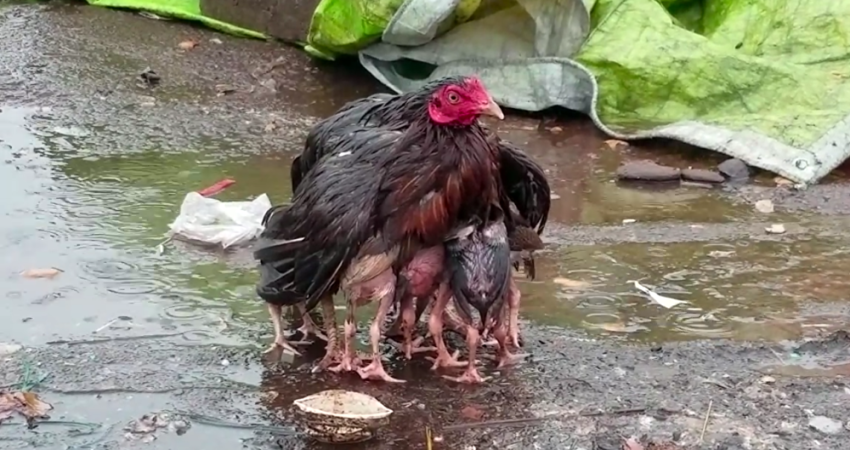

Infectious Bursal Disease (Gumboro):
A viral infection that mostly affects immature birds aged between three and 18 weeks targeting the bursal component of the immune system resulting in immunosuppression and susceptibility to secondary infections.
Chickens may exhibit severe prostration, incoordination, watery diarrhoea, soiled vent feathers, vent picking, and inflammation of the cloaca.
Highly contagious with flock morbidity of typically 100 per cent, and mortality can range from 5–20 per cent. Unfortunately, there is no effective treatment for this disease, therefore, depopulation of infected flocks and rigorous disinfection of contaminated farms is advisable.
Usually, the level of maternal immunity and vaccination reduces susceptibility to this infection during the rainy season.
Fowl pox (non-zoonotic):
Occurrence is highly dependent on the breeding time of mosquitos or blood-sucking insects, which coincides with the rains.
The insects play a major role as vectors in transmission of the pox virus. The disease may occur at any age and is highly contagious attacking the skin and surface of the upper alimentary and respiratory tract leading to formation of wounds that progress to thick scabs.
Secondary infection of the pox results in birds being weak and emaciated due to loss of appetite, difficulty in swallowing and breathing, swollen eyelids leading to closure of one or both eyes and soiled feathers.
The infection has no treatment but it is possible to vaccinate to stop the outbreak.
Vaccinate healthy birds at the age of nine weeks, and this is done once as it provides lifetime immunity. Eliminate standing water and all mosquito habitats to control mosquitoes.
Isolate or cull infected birds to remove the source of the virus.
Fowl cholera:
It strikes birds older than six weeks. In acute outbreaks, the first warning sign is usually sudden death of birds that initially appeared healthy.
In chronic cases, affected birds exhibit laboured breathing, diarrhoea (wet grey, yellow or green droppings), loss of appetite, ruffled feathers, drooped wings and tail feathers and the tendency of bird to sit quietly with their heads tucked in and eyes partly closed.
Depending on the localisation of the disease, it may result in lameness and swelling of legs or wing joints or result in twisted neck, swelling around the eyes and discharge from beak or nostril. Symptoms of the chronic form may be confused with fowl typhoid.
E-coli and Salmonella:
They occur as secondary infections following immunosuppression and poor sanitation resulting from wet conditions.
The common symptoms include breathing difficulties, appetite loss, depression, infection of the umbilical stump (omphalitis) and low growth rates. Management of this disease can be achieved by oral administration of broad-spectrum antibiotic and general sanitation management.
During the cold season, the humidity is likely to increase resulting to damp litter or feeds which provide favourable environment for fungus (Aspergillosis) to flourish in which the birds breathe in the spores, which grow into visible lesions as green and yellow nodules that completely fill the lungs causing a lot of respiratory discomfort.
High incidences of diseases under free-range during the cold season are due to uncontrolled exposure of birds to environmental influence, absence of housing, lack of routine vaccination and adequate feeding while in the case of intensification, the degree of stocking density and inadequate ventilation highly promotes the spread rate of the diseases.
 Contact Jaguza Support
Contact Jaguza Support